A Jerusalem Judaica artist, Shuki Freiman, having just turned 80, pulls off a truly fresh and yet traditional Haggadah that breams with Israeli optimism and reaches to the past to level an unflinching gaze at the future
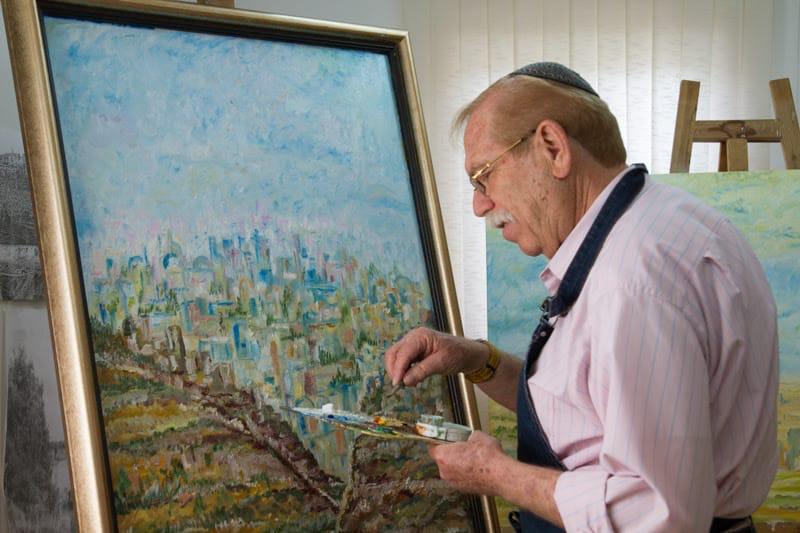
What is the purpose of life? What makes life worth living? To me, the answer is simple: the purpose of life is to shoulder the treasure chest left you by your ancestors and carry it through life’s trials and tribulations all the while transmitting it to your children. And if it so happens that in your life journey you can add something to this chest, something of value only to your family maybe, or to your people, or, in rare cases, to the whole of mankind, well then, you have lived a life worth living.
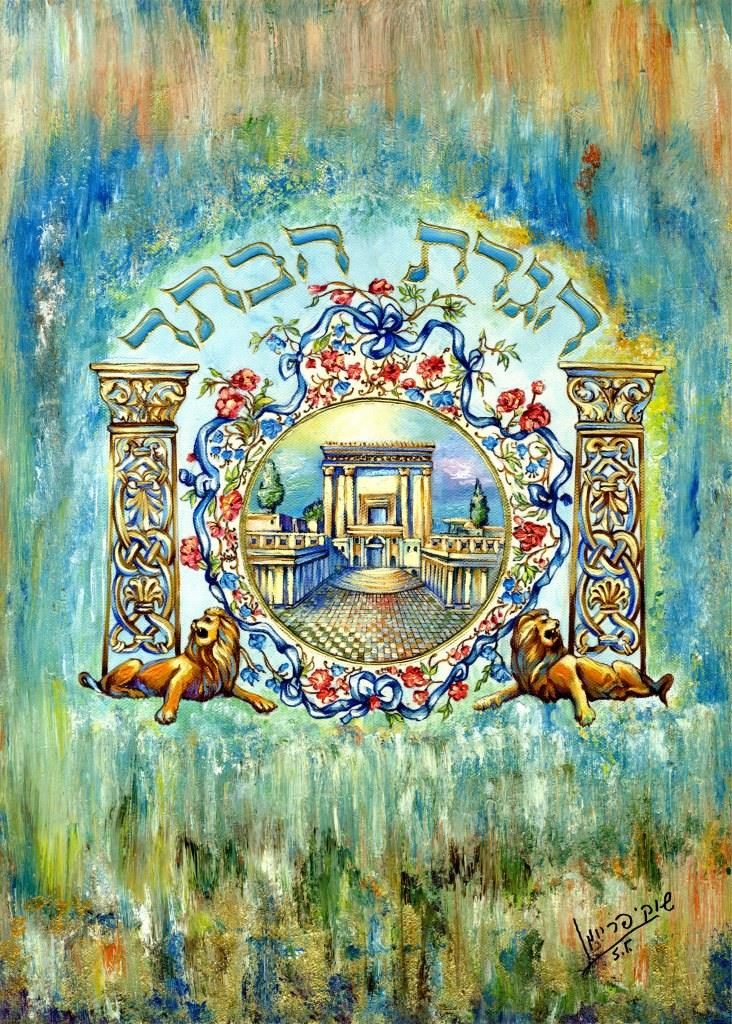
Put another way, the purpose of life is love. Not the self-centered kind that passes for love today, not love for one’s own self or even one’s own family, though those are important too. The love that is the purpose of life is the love of Him from Whom all else flows. One of the earliest commandments, the one that is on little scrolls on our doorjambs and in the phylacteries we put on every morning, is to love God with THE FULLNESS OF OUR HEARTS, WITH OUR ENTIRE BEINGS. All the other commandments are simply a recipe, a road map, a guide to making the first one possible.
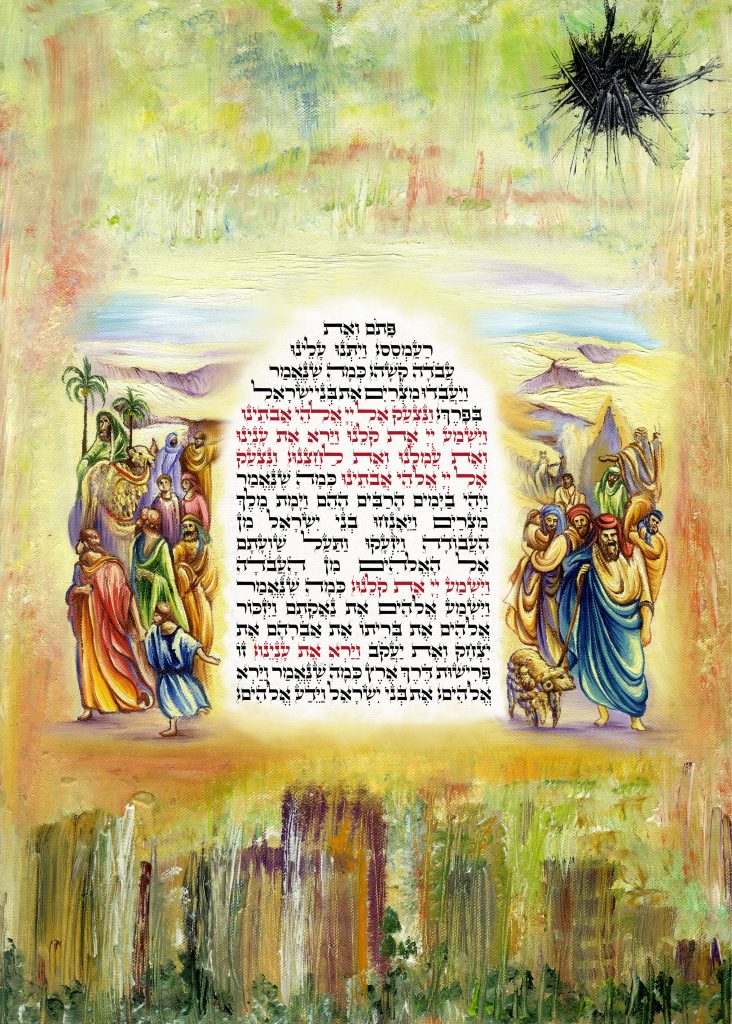
The love of one’s tradition, one’s cultural heritage, is nothing but a facet of the love of God. Bringing children into the world and infusing them with the wonderful heritage of our forefathers is the greatest joy one can have in this world; it IS the purpose of life.
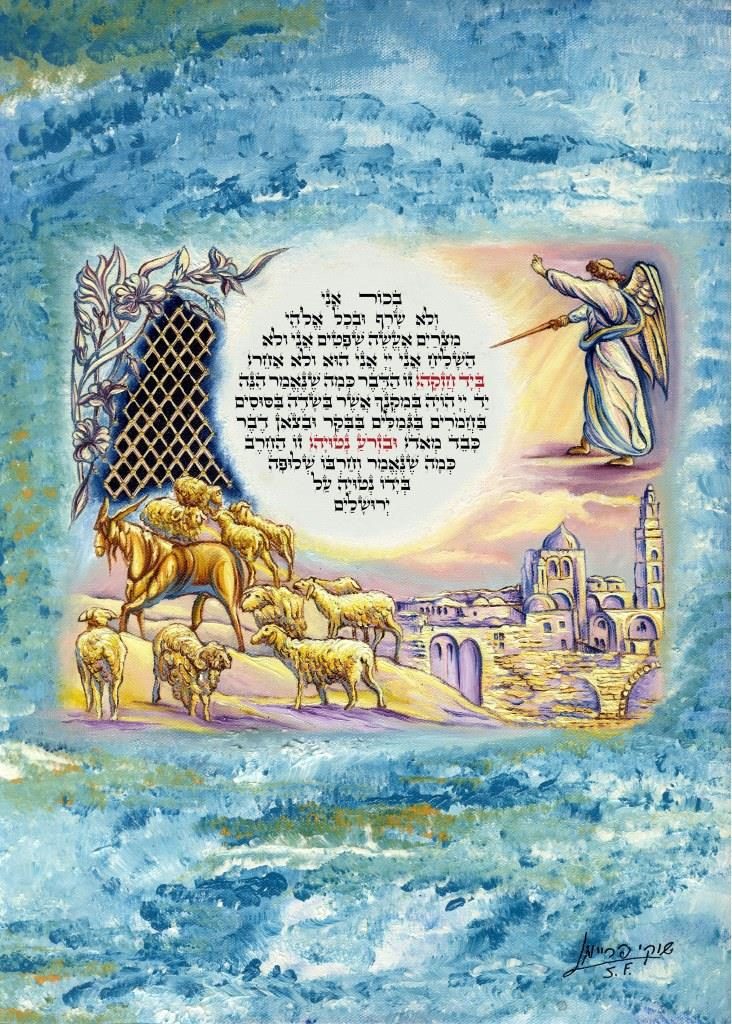
Nothing demonstrates this point more clearly than Passover and the traditions surrounding this holiday. It is entirely devoted to transmitting to future generations the foundational story of the People of Israel. Those of us who had the luck to work in startups know that each and every one has its own foundational story. It is the story that the employee who joined last month tells the employee that joined yesterday over their first late-night pizza in the conference room. It is the story that the founders tell their clients and their investors. It grows in the telling, it becomes a myth, it takes on a life of its own, it is transmitted from generation to generation, because it contains the DNA of the company, because it answers the two questions without which nothing makes sense: why the company was created and how.
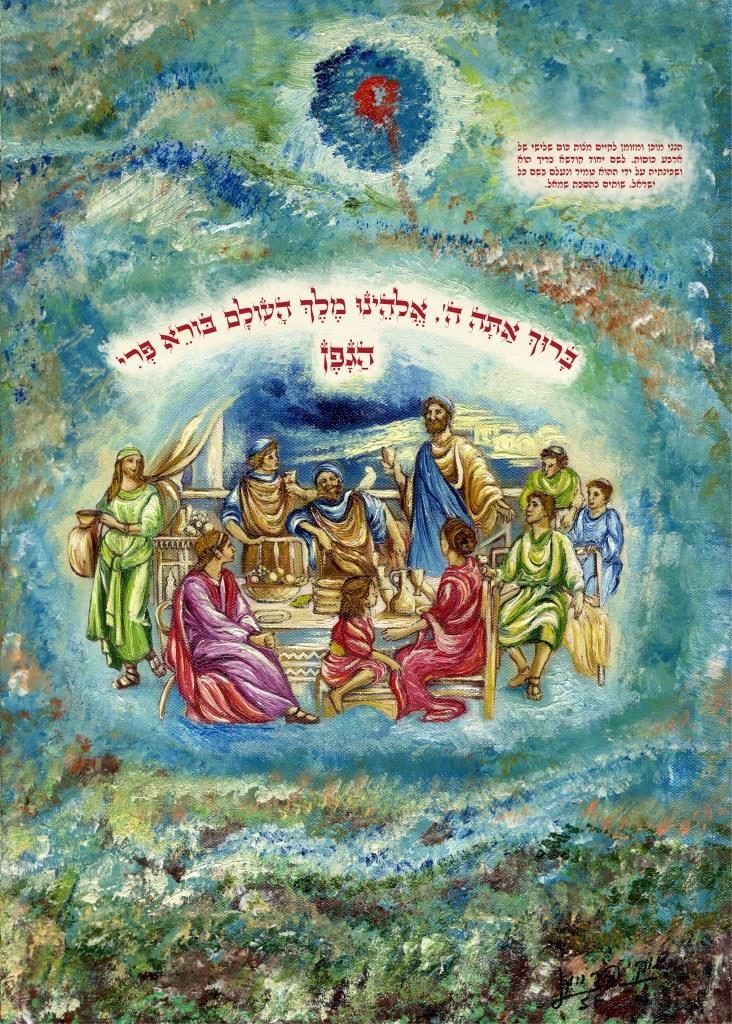
The Haggadah, literally the “telling” of the Passover story of deliverance from Egyptian bondage to liberty in the Land of Israel, is the foundational story of the more than three thousand year old people known today as Jews. In its physical form, the Haggadah is an instructional booklet. It is designed to tell the story of how and why the Jewish people came into being. Amazingly, it tells it in a way that is at once accessible small children and intellectually challenging to the most venerable of sages. The oldest surviving copy of the Haggadah is a thousand years old, but work on it began a thousand years before, immediately after the destruction of the Second Temple by the Romans in 70 AD.
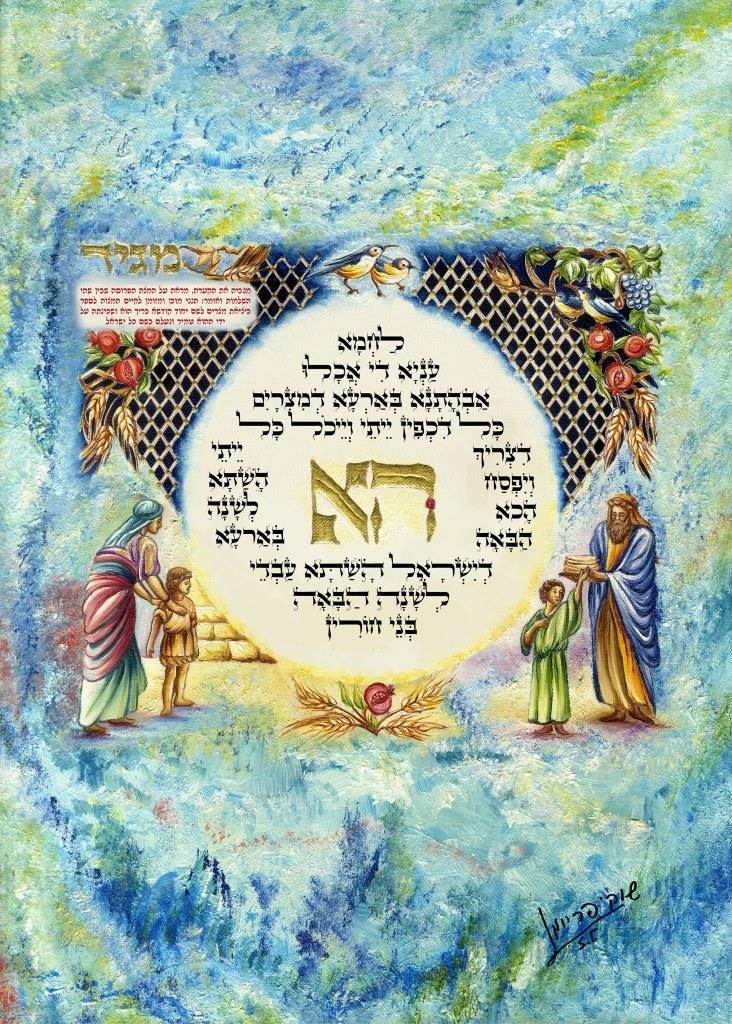
The cessation of the annual pilgrimage to Jerusalem for Passover, a pilgrimage during which the tales of the Egyptian Exodus were orally told and retold, meant that a portable, written version had to be created. And it was. Since then, the Haggadah became one of the world’s most widely illustrated works of literature. Looking at the glory of the copies that survived the sad history of the Diaspora, it is heart-wrenching to think what must have perished in the fires of the pogroms and the Holocaust.
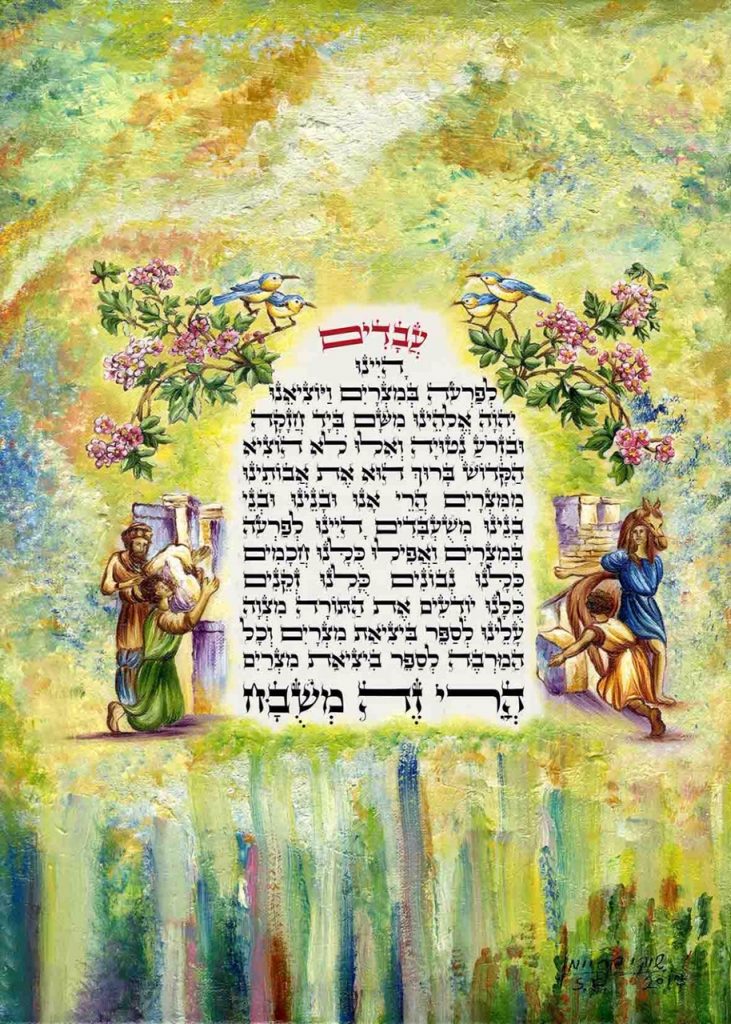
It also means that it takes a particular courage, a special kind person with a special kind of life story to attempt the creation of a newly illustrated Haggadah. Yehoshua (Shuki) Freiman is such a person. Born in the Old City of Jerusalem in the year that German tanks rolled into Poland sealing the fate of one third of the world’s Jewry, he has never lived more than a few steps from the small, unassuming hilltop on which Abraham raised his hand to sacrifice his only son Isaac and on which the Lord stayed his hand, giving birth to the world as we know it today.
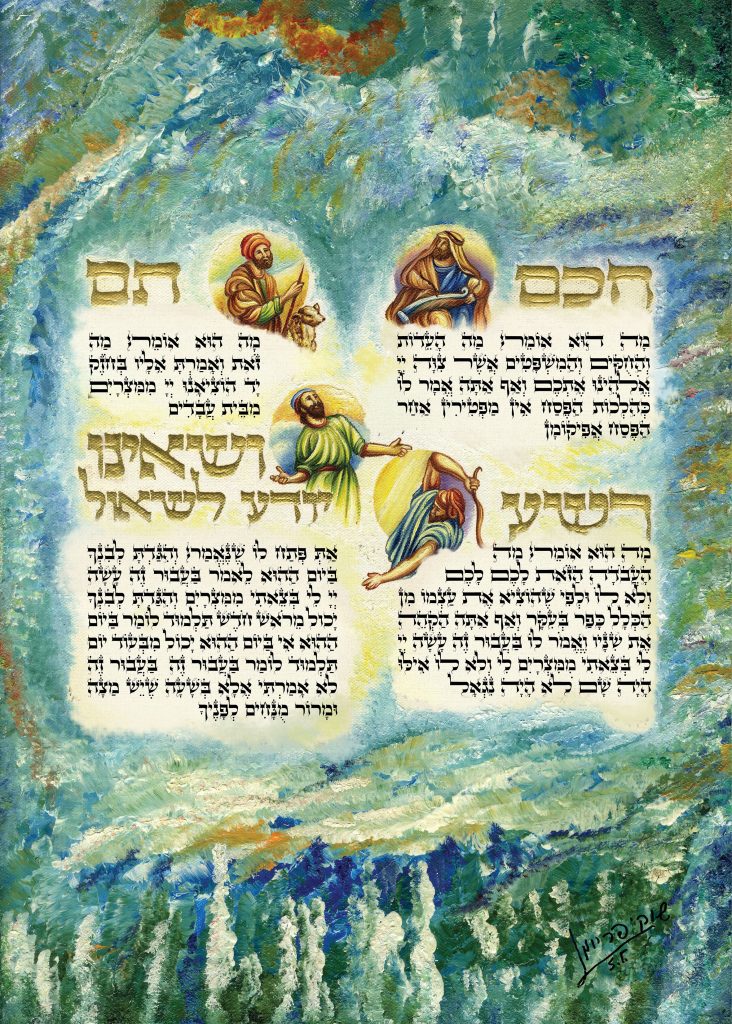
Jerusalem leaves no one untouched. Some go mad visiting that navel of the universe. Some, myself included, feel the almost unbearable sadness of generations, smell the fires set by the Romans, see the endless caravans of Jews driven into exile. But not Mr. Freiman. From the perch of his eighty years, having witnessed Jerusalem reborn as the free and prosperous capital of the Jews, his new Haggadah brims with endless optimism. The colorful, almost naive illustrations are geared more towards the innocent than the sage, the hopeful than the weary. Mr. Freiman’s Haggadah is the Haggadah of a free, prosperous, and confident people. It does not belong to the barely burning remnant of a once great civilization as many old Haggadahs do. No, it is the confident, fresh work of someone who has lived through a modern day exodus and embodies in his own life the story of miraculous deliverance from near extinction to freedom and prosperity.
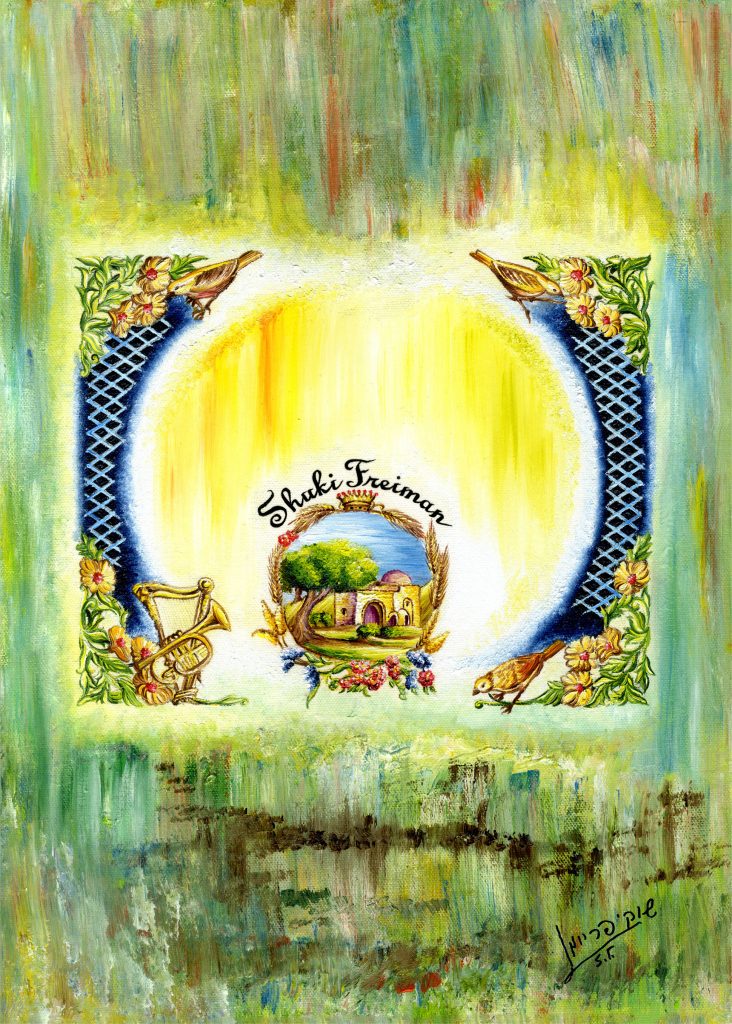
A signature page, showcasing the Bezalel-trained artist’s mastery of line and color
Mr. Freiman’s work would have been at home more in Solomon’s new palace than in the diaspora stetl. It is better suited to a Seder table in a modern Israeli family home than any other place or time. Looking through the plates, one more hopeful and cheerful than the other, I couldn’t help thinking that “next year” is “this year”, that the most poignant line in the entire Haggadah “Next Year in the Rebuilt Jerusalem”, a line that for two thousand years must have seemed as the epitome of wishful thinking to the generations of Jews who read it out loud, has now come to pass. The impossible became reality and, like a startup that reached yet another once inconceivable milestone, we can take a moment to celebrate and then get right back to work.
Mr. Freiman’s work will be available for viewing from April 1st through June 3rd at 17 Queen Shlomtzion Street in Jerusalem. The exhibition is curated by Dr. Ziva Geva-Levin. More information about the artist can be found in his Facebook page and his personal website.


